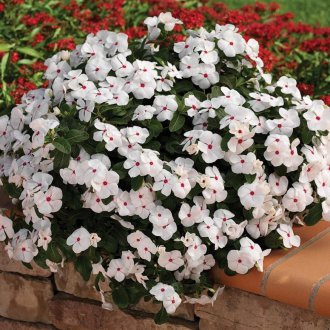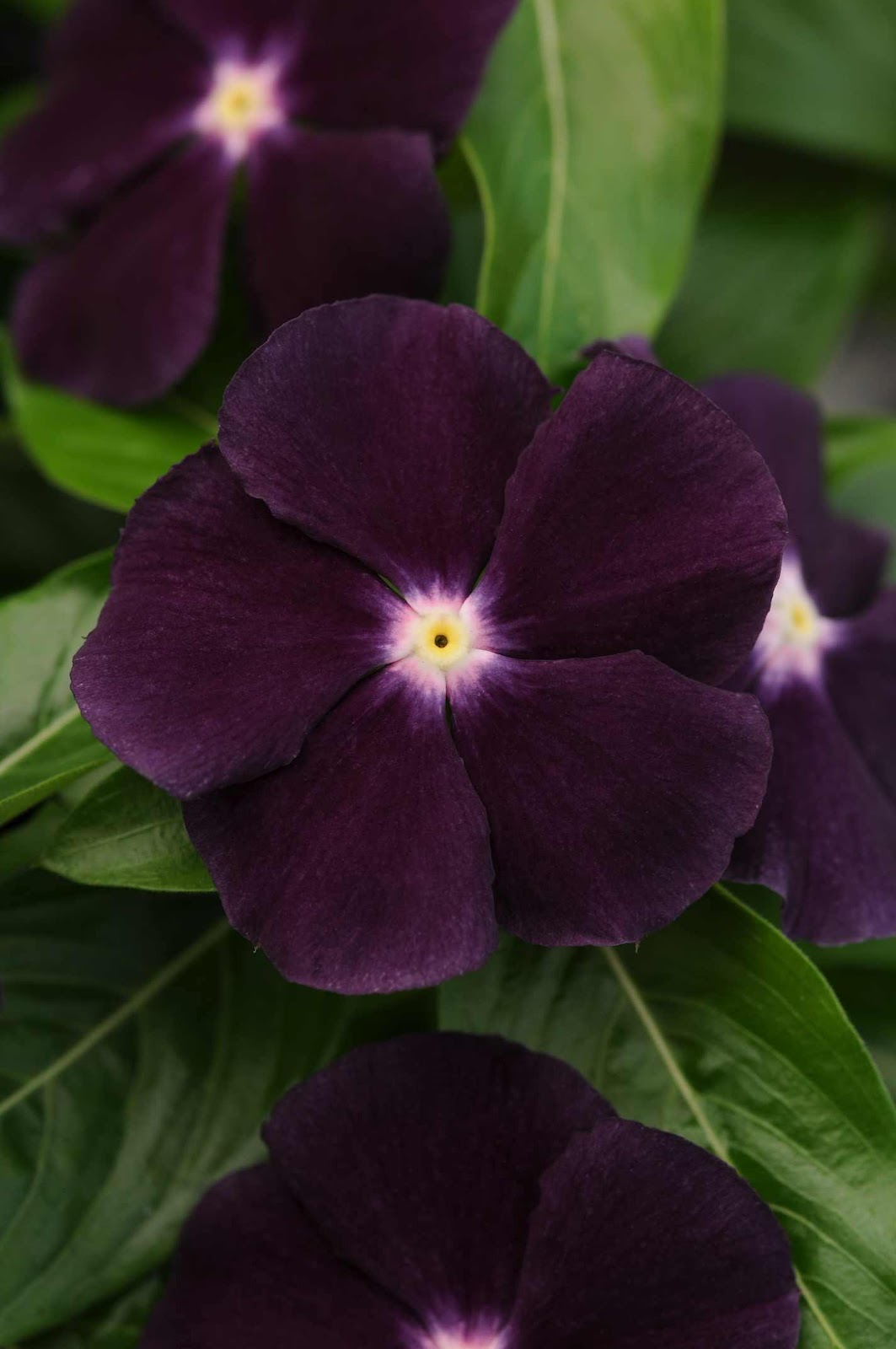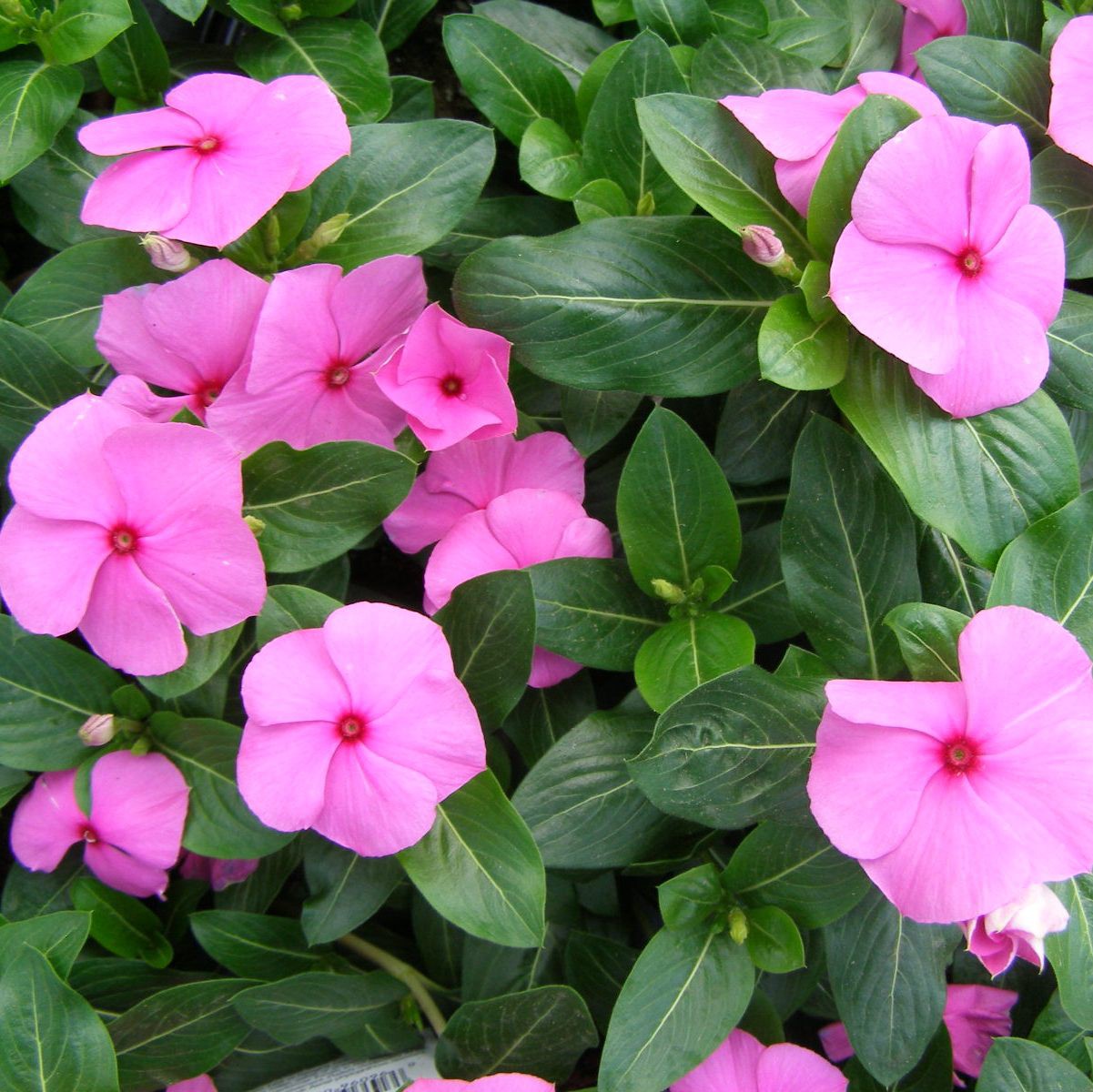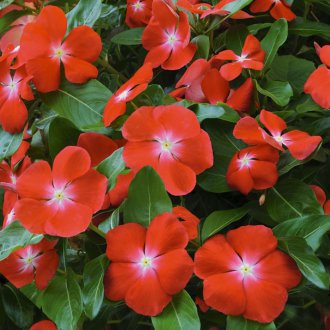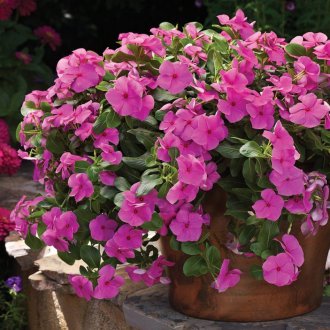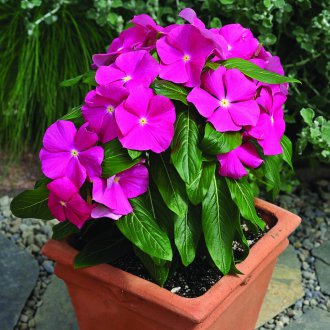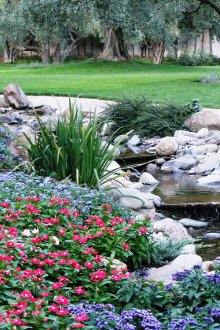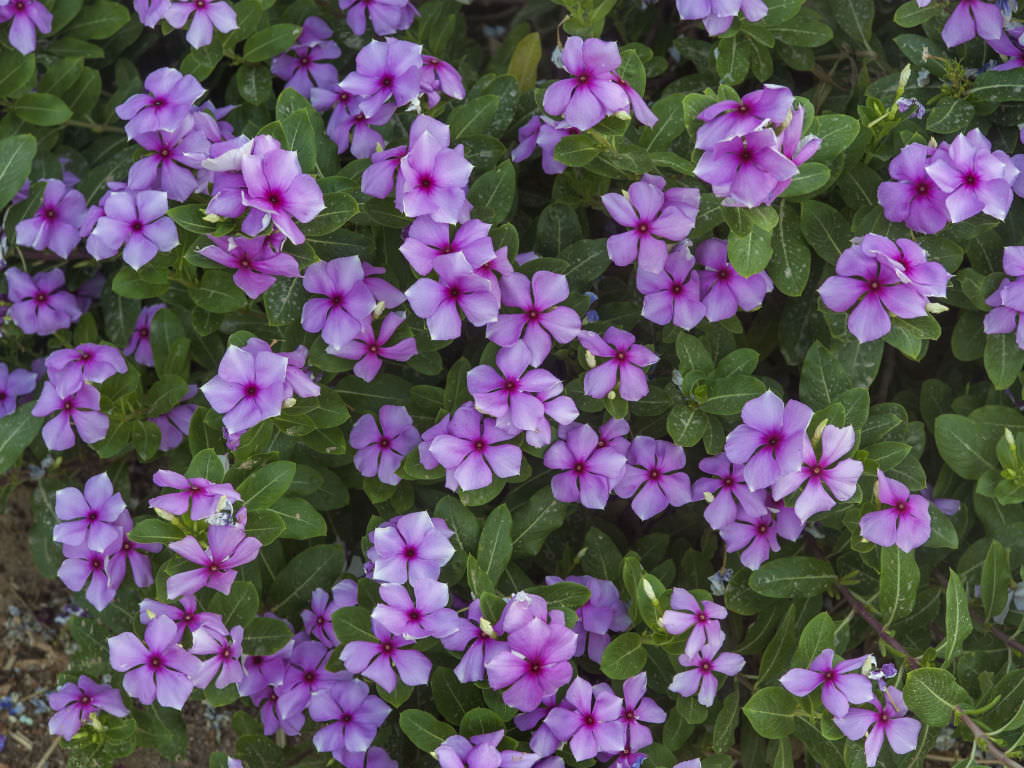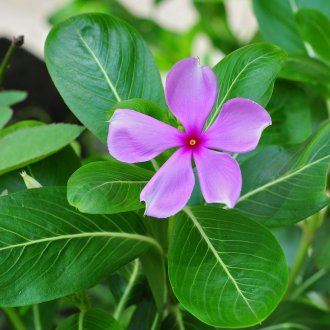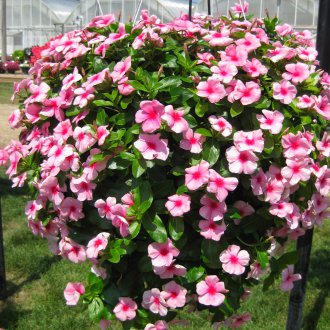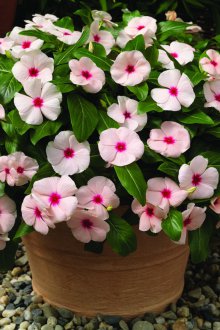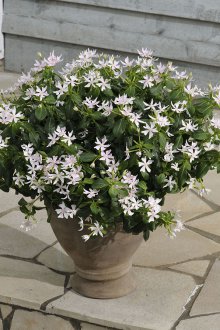Katarantus: types, breeding and nuances of care, depending on the conditions (23 photos)
Content
Katarantus (it is also called pink periwinkle) is a plant that has tropical roots. In the wild, it can be found in many places: in Madagascar, in India and China, in Cuba, in Indonesia and the Philippines. There it looks much more impressive, its sprawling bushes reach one and a half meters in height. In the middle lane, their sizes are more modest - a rare variety grows to a meter high. But the riot of colors always remains unchanged. Whatever color the leaves of the plant or its petals are, they always remain bright and eye-catching.
Cataractus blooms for a long time, most often from the beginning of spring to mid-autumn. At the same time, the plant can survive winter only in room conditions. In open ground, it is doomed to death.
Therefore, there are several options in which the cultivation of the cataractus takes place:
- One year. In this case, the flowers are planted every year again using the processes from the batch of the previous year.
- Perennial. In this case, the flowers are transplanted every autumn into spacious flowerpots, and every spring returned to the open ground.
- Homemade. Katarantus at home can live for many years, pleasing with long flowering and an almost complete absence of difficulties in care.
Depending on which method was chosen, the nuances of caring for a flower and the conditions that are required for its normal growth differ. They differ depending on the selected species.
Types of Catharanthus
For decorative planting, katarantus pink is usually used - the variety most widespread and rich in various subspecies. It is distinguished by the splendor of flowering, with proper care it can live for many years and grow into a large bush. The leaves are narrow, glossy, pointed at the end.
The flowers have five petals, collected in a dense cup, from which yellow stamens barely peep. The buds open alternately, fading in succession and replacing each other.
Indoors can bloom year-round, even in winter. The main variety includes subspecies.
Pacific
They are used for breeding at room conditions, their maximum possible height is up to thirty centimeters. Flowering is not too plentiful, but constant. Flowers with white petals and a bright red center. In turn, includes subspecies:
- Burgundy, the flowers of which are painted on the contrary - the center is white, the petals are scarlet;
- White, with snow-white petals and a snow-white center;
- Apricot, with a creamy shade of petals and raspberry centers;
- Ice pink, with pale pink petals.
Cooler
They can grow on the street, grow to half a meter. Strongly branch, bloom profusely and for a long time. The flowers are round, large. The peephole is bright. Includes:
- Grape whose petals are lilac and the center pink;
- Peppermint, whose petals are white and the middle is red;
- Red, with the corresponding name bright red flowers;
- The first kiss, with large velvety flowers of a wide variety of colors - the most popular is a blue-violet hue;
- Albus, with white petals, a yellow center and delicate white veins on pointed narrow leaves;
- The cascade, which is the only one of all flowering cataracts, has long hanging shoots that can reach up to one and a half meters in length, and has a wide variety of colors.
In order for a catarhus, planting and caring for which to take time and effort, bring joy, one should take the choice seriously - the desired variety should look attractive and not require too complicated manipulations to maintain life in it.
However, all the quarantines are quite unpretentious. You should start with reproduction - because before you take care of the plant, you need to get it.
Methods of propagation of Catharanthus
Like any plant, cataractus can reproduce in more than one way. Seeds, cuttings, vegetative division - the choice depends solely on which option you like more and there is an adult plant in reach.
In any case, the approach to growing a new catharanthus should be taken seriously.
Seeds
The process of planting seeds is the most difficult of all, but if there is no ready-made adult plant nearby that can be propagated, there is no alternative.
- Training. The process usually begins at the very beginning of spring, preparing the seeds - wrapping them in gauze, they soak for thirty minutes in a weak solution of potassium permanganate to kill all possible pests. In addition, the soil is mixed, taking equal shares of peat, sand and garden soil and steamed also from pests.
- Sowing. The resulting soil is poured into a container for seedlings - this can be a specially purchased box or simple plastic cups - so that there is some distance to the edge. After the soil is moistened a little, they wait until it dries, and the seeds are sown, covering them on top with at least two centimeters of the earth.
- Creation of suitable conditions and expectation. The container is covered with opaque polyethylene or cleaned in a dark place, making sure that the temperature is not lower than 25 degrees and not higher than 30. Seedlings should be expected in a week. A maximum of ten days.
- Seedling care. When the seedlings rise, you should rearrange it in a bright place (but not in direct sunlight), reducing the temperature to eighteen degrees. Every day, the soil around the seedlings must be very carefully loosened and irrigated from the sprayer.
- Planting seedlings. When three leaves appear on the sprouts, you can gently dig them out of the ground and place them in a box thirty centimeters apart. After this, the seedlings should grow stronger, the root system should form in it. If the ground part does not increase in growth for a long time, this is normal - at this time the roots grow. If the leaves do not turn yellow, then everything is in order.
- Planting seedlings in the ground or pots. It is carried out in May, when the seedlings are sufficiently strengthened and their root system is sufficiently formed. Before transplanting, the soil is abundantly watered so that it is easier to separate from the pot, and in a single lump transplanted into a pre-prepared hole. It is not possible to separate the germs that have been in the same box since germination - their root systems are very intertwined and an attempt to forcibly separate them will lead to death.
Bush division
In the spring, from March to May, in the presence of an adult plant, the catharanthus propagates more easily. Using a fairly sharp shovel, the root system of an adult bush is cut into two parts and the two resulting plants, sprinkled with fresh cuts of charcoal, are planted in the ground - in a pot or in the fresh air.
Cuttings
In early spring, you can trim the tops of adult bushes, remove the lower leaves from them and plant them in flower pots, covering with a glass jar. Inside the pots there should be fertile soil mixed with sand in equal proportions, and inside the jar the humidity and temperature should not be lower than twenty degrees. Once a couple of days, the jar needs to be raised, the plant is sprayed and aired.After three weeks, the jar can be removed permanently and either leave the catharanthus in a pot or transplanted into open ground.
Transplantation of a cataranthus is a simple procedure. It is enough to dig a hole that is deep enough so that the entire lump of earth with the root system fits in it and transfer the plant into it from the previous pot. Exactly the same transplant is carried out in a pot - it just acts as a hole.
Features of care for catharanthus at home
If a catharanthus has been instituted, cultivation and care will require effort and time. But at home, they will pay off handsomely - the plant will bloom bright large flowers all year round. To make this possible, you should pay attention to:
- Lighting. Katarantus is a tropical plant, but direct sunlight, however, is contraindicated. Pots with it should be placed on the eastern or western windowsill, covered with curtains in the midday heat to prevent yellowing of the leaves - a reaction to a sunburn.
- Temperature. Perhaps the only truly complicated article in caring for catharanthus is that it requires a steady temperature of twenty to twenty-five degrees in the summer and twelve to eighteen in the winter. If it is impossible to ensure winter temperature (and it is difficult to withstand such a cold in a room where an active human life takes place), the flower should be provided with additional illumination. Otherwise, its branches will stretch and will have a painful appearance.
- Humidity. In rainforests, the air is always water-filled - similar conditions should be provided for a domestic plant. Once a day, it should be sprayed from a spray bottle and it is good if there is always an aquarium nearby, a special fountain for humidifying the air or a tray with moist sea pebbles. On hot days, spraying should be carried out up to three times, observing the state of the plant - the dryness and fragility of the branches indicates a lack of water in the air.
- Watering. In tropical forests, the soil is always quite moist - therefore, watering the catharanthus should be done so that the soil always remains moist. In this case, water stagnation must not be allowed, and the pan from under the pot should be emptied in the evenings. The water itself must be well purified (or well settled) and warm.
- Fertilizer. Twice a month, using mineral fertilizing with a high content of phosphorus and potassium, the plant is fertilized from April to September - or, if the flowering period lasts longer, to its end.
- Pruning branches. It is carried out once every two weeks with young bushes - extra shoots are plucked so that the remaining branches and grow thicker. In the spring, all bushes, from young to old, are pruned by a third - this allows them to look tidy longer.
- Transfer. Each year, the catharanthus needs to be transplanted, transferring from one pot to another. This is necessary, since the root system of the plant grows constantly and ceases to fit in the old container. Pots should be deep and narrow.
Sometimes catarrhus has unpleasant diseases. It can be affected by pests, it may turn yellow from too much light or rot due to too much watering. To prevent this, you should adhere to the recommendations for care.
Features of care for Catharanthus in the open ground
Katarantus in the open ground is even less whimsical than his relative growing on the windowsill. The following should be considered:
- Lighting. Planting should be in places where there is not too much and not too little sunlight. In the shade, its branches will be too long, painful, leaves will turn yellow in the bright sun.
- Topping. Once a week after the catharanthus has been planted in open ground, the cultivation of the seeds of which has ended, you should pinch its top. This makes the trunk more branched, and the bush itself is more magnificent.
- Watering. Katarantus should be watered so often that the earth at its roots remains moist.During rain, you should ensure that the water does not stagnate - you can arrange a drain for it. From time to time, the plant can be sprayed - its branches will respond to this in the most favorable way.
- Fertilizer. Once every ten days, fertilizers rich in calcium and phosphorus should be applied to the flower bed.
Care for the quarantine does not require much effort, but should be carried out carefully and regularly. Then the plant will bloom and delight with the brightness of the buds all the time, from April to September - and at home all year round.

